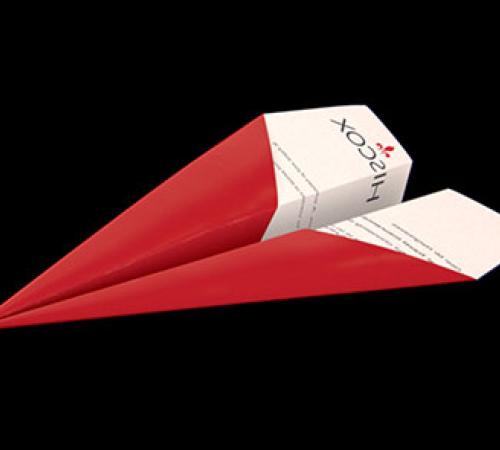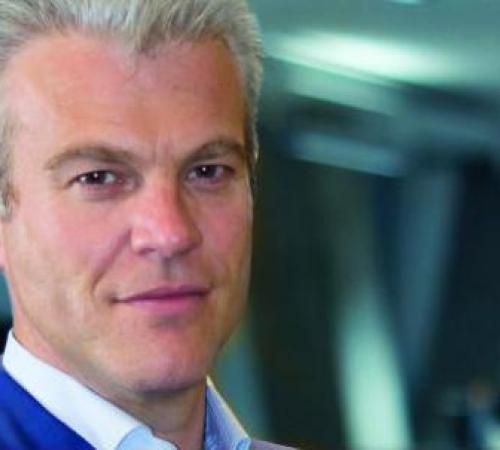

Learn how serial entrepreneurs Jeff Bezos, Sir James Dyson, Steve Jobs, Sir Richard Branson and Tim Ferriss bounced back from the obstacles they faced on their journey to success.
Jeff Bezos
‘The Innovator’
'Without a willingness to fail, you cannot innovate.'
12 January 1964
Jeff Bezos imparted this wisdom from his experience as an entrepreneur to a group of students in a session at his Bezos Centre for Innovation. And while Jeff Bezos’s company Amazon now commands a $500 billion valuation, a look into the founder’s history shows a journey paved with failed ventures.
Age 3
Taking matters into his own hands
Bezos was only three when he made it clear that innovation was the name of his game. Not content with waiting for his mother’s OK, Bezos took a screwdriver to his crib in an attempt to dismantle it into a more grown-up bed.
Age 22
Graduating Phi Beta Kappa
Baby Bezos’ engineering skills culminated in him graduating from Princeton University with a Bachelor of Science in Electrical Engineering and Computer Science in 1986. He outperformed many of his peers, was part of honour societies Phi Beta Kappa and Tau Beta Pi, and was president of the school’s chapter of Students for the Exploration and Development of Space.
Age 30
The spark of an idea
After a few roles in Wall Street and banking, Bezos became hedge fund company D.E. Shaw & Co.’s youngest-ever senior vice-president, at the age of 30. While looking for new ventures for D.E. Shaw & Co., a statistic caught his eye: the World Wide Web usage was growing by 2,300% a month. Seizing this discovery, Bezos began exploring the possibilities of selling online. He soon quit his job and moved to Seattle to build an e-commerce business.
Age 31
Amazon takes its first steps
Working in his garage alongside five employees, Bezos built and launched Amazon in July 1995, aged 31. The 'virtual bookstore' offered one million titles, and a year later had more than $15.7 million in sales. Amazon’s profits struggled to take off, however: its two-year figures showed a $30 million loss, followed by another $1.25 million loss in 1998. In fact, Amazon’s first full-year profit didn’t come until 2004, 10 years after it started.
Age 32
Perseverance pays off
‘If you’re not stubborn, you’ll give up on experiments too soon.’
Despite low profits, Bezos persevered and his determination paid off. Amazon grew rapidly year-on-year. In the fourth quarter of 1996, Amazon’s revenue was at $8.46 million. The first quarter of 1997 would see this figure double to $16 million.
Age 34
Heavy investments doomed to fail
Bezos’ drive to experiment also led to some major missteps. Following his aim to make Amazon ‘the everything store’, Bezos ignored the wishes of everyone else at Amazon to make a number of risky investments, including into toys and online auctions, that ultimately didn’t pay off.
Age 36
Reinvesting for the win
‘Your margin is my opportunity.’
Bezos decided he would heavily reinvest all surplus revenue into growing Amazon. He purchased a wide range of competitors and complementary businesses to place the company in a leadership position. Bezos also diverted the money to other passions, including founding commercial space flight company Blue Origin in 2000. He continued to give $1 billion of his wealth annually to the company.
Age 49
The Washington Post and other ventures
‘Experiment patiently, accept failures, plant seeds, protect saplings, and double down when you see customer delight.’
Under the company Bezos Expeditions, Bezos bought The Washington Post at the age of 49 for $250 million. He has also funded major businesses including AirBnB, Google and Twitter. He continues to invest for profit and donate philanthropically. In 2017, Bezos acquired Whole Foods for $13.7 billion, at the age of 53.
Sir James Dyson
‘The Late Bloomer’
2 May 1947
'I enjoy failure, because failure teaches you something'
In an interview on The Big Idea with Donny Deutsch, Dyson advises anyone feeling held back by the fear of failure to ‘get inspired by people saying no.’ Now boasting a net worth of $4.4 billion, Dyson faced many a ‘No’ on his path to success.
Age 23
The beginnings of invention
Dyson followed a traditional school path culminating at the Royal College of Art, where he studied from 1966-1970. In his last year at the university, he helped design the Sea Truck – a flat-hulled, high-speed watercraft which could be used to land sea vehicles without needing a jetty or harbour.
Age 24
The Ballbarrow is born
At the age of 24, he and his wife purchased a 300-year-old farmhouse that needed renovation. Here, he began reinventing the wheelbarrow to aid his work, eventually creating the famous ‘Ballbarrow’. The Ballbarrow replaced the traditional wheel with a large ball, which made it easier to use on mud and soft soil, and more stable.
Age 30
The affirmative power of 'no'
‘Failure, coupled with perseverance, can be the springboard to better things'
The Ballbarrow won the Building Design Innovation Award in 1977. However, every store Dyson approached rejected his new invention. Undeterred by the word ‘No’, Dyson switched tactics and sold directly to customers instead. Fortunately, the direct approach was successful, and the Ballbarrow became a market leader within three years.
Age 32
A revolution in vacuum cleaners
A chance incident of frustration with his constantly-clogged Hoover vacuum cleaner inspired Dyson to revolutionise the floor-cleaning world. Looking for better suction to tackle the wooden floors of his home, Dyson set about creating a bagless vacuum cleaner at the age of 32.
Age 37
Prototype after prototype
Dyson took five years and went through a staggering 5,126 prototypes to create the G-Force cleaner. His resilience came in handy for selling his new invention as well. Every manufacturer or distributor he approached, including brands such as Black & Decker and Electrolux, felt Dyson’s product would be far too disruptive. After all, the industry relied on bringing in £100 million in disposable vacuum bag sales. Dyson was forced to launch the product in Japan through catalogue sales.
Age 40
Naivety and treachery
As the Ballbarrow business gained traction, the company expanded quickly. A shift in their sales model from direct to wholesale meant the company saw rapid growth while getting into significant debt. They no longer made enough money from each unit sold. Over five years beginning in 1987, Dyson suffered further personal debt fighting patent lawsuits after his sales manager stole and sold the Ballbarrow design to a rival company.
Age 44
Dyson the company
‘It’s important to have ideas. But this is not enough. You need sheer dogged determination and perseverance to push the idea through.’
Abandoned by his Ballbarrow company and having lost his Ballbarrow patent, Dyson concentrated his efforts on vacuum cleaners. Rapid popularity of his G-Force cleaner in Japan would allow him to set up Dyson Appliances Ltd. in 1991, at the age of 44. Two years later, Dyson had enough royalties to set up an R&D facility in the UK, from which he continues to explore new products and expand the Dyson brand.
Age 59
The Dyson Airblade and beyond
‘Commercial success [comes] secondary to the pursuit of solving the problem – that is what I really enjoy.’
Dyson believed that ‘something is beautiful only when it works properly,’ and, while growing his vacuum cleaner range through products such as the Dyson Ball, he explored other industries in which he could make a difference. In 2006, Dyson launched the Dyson Airblade, a fast, energy-efficient hand dryer, followed by the Dyson Supersonic hair dryer in 2016.
Steve Jobs
'The Visionary’
24 February 1955
'The only way to do great work is to love what you do.'
This was the advice Steve Jobs gave the graduating class of 2005 at his commencement address at the University of Stanford. ‘I was lucky,’ he said, ‘I found what I wanted to do early in life.’ However, his road to finding what he loved was punctured by a series of setbacks.
Age 13
Humble beginnings
Jobs was given away for adoption by his unmarried mother under one condition: that he receive a college education. Unfortunately, while young Jobs displayed an extraordinary interest in engineering and mechanics, he was eventually suspended from school. Jobs credits an astute teacher for rekindling a passion for learning, which saw him follow his love for electronics, and work at the assembly line at Hewlett-Packard at only 13.
Age 16
Meeting Steve Wozniak
Jobs’ interest in electronics saw him develop friendships with fellow enthusiasts Bill Fernandez and Steve Wozniak. Jobs would often visit the older Wozniak at the University of California, Berkley, which inspired Jobs to enrol in a freshman English class at nearby Stanford University at the age of 16.
Age 17
Reed College's hidden courses
Jobs eventually enrolled in Reed College in Portland, Oregon, a decision he later derided as naïve. He dropped out of Reed College after six months, at 17, not wanting to spend his parents’ savings in a course from which he wasn’t gaining any value. For 18 months afterwards, Jobs attended drop-in classes at Reed, one of which was a calligraphy course that later influenced the typefaces on his flagship Mac product.
Age 18
An Atari story
In 1973, Jobs’ friend Wozniak had just completed work on a new version of the classic video game Pong. He passed it on to Jobs who took the game to Atari, Inc. The major video game development company promptly hired the person they thought created the game – at the age of 18, Jobs had acquired a job as a technician.
Age 19
Visions of an electronic world
In mid-1974, Jobs travelled to India looking for spiritual enlightenment. Returning back to the US, he experimented with psychedelics – an experience he would later describe as ‘one of the two or three most important things I had done in my life’. Jobs continued to work with Wozniak and saw potential in a new device he had created: a low-cost digital “blue box” to make free long-distance calls. While the product itself was illegal, their clandestine sales went encouragingly well. The exciting, fun and profitable experience would spark an idea in Jobs – perhaps commercial electronics was the way to go.
Age 21
Apple's seeds are sown
‘Most people never pick up the phone and call, most people never ask, that’s what separates the people that do things from the people who just dream about them.’
When Jobs was 21 years old, Wozniak showed him the new Apple 1 computer he had created. Jobs saw a market for the new computer, and they formed Apple Computer Inc. in Jobs’ garage. Although their neighbours summarily dismissed their new invention, Wozniak continued to create his code, and Jobs spent hours on the phone to investors, eventually convincing Paul Terrell to take 50 Apple I computers for $500 apiece for use in his store.
Age 23
Apple rises to success
Jobs and Wozniak introduced their first consumer product, the Apple II, in 1977. It became a highly successful mass-produced microcomputer product in the industry. A year later, at the age of 23, Jobs was worth a million dollars. At 24, this figure was at $10 million, and by the time he was 25, Jobs was worth $100 million. He became one of the youngest people ever to make it into Forbes’ list of the nation’s richest.
Age 30
Dropped from Apple
Following rapid growth, Jobs hired John Sculley to be Apple’s CEO in 1983. Unfortunately, they clashed repeatedly due to conflicting visions for the company. Their feud culminated in 1985, and, at age 30, Jobs was removed from the company he helped found. Jobs left Apple and formed NeXT with five other senior Apple employees. While their hardware offerings were relatively unsuccessful, a shift to software saw the company quickly become popular with agencies such as the NSA and the CIA.
Age 42
CEO of Apple
‘[Steve] wasn’t trying to maximise his wealth, or anything else.’
Eleven years after NeXT was created, Apple bought the company for $429 million in 1996. Jobs once again joined the upper ranks of Apple, becoming the interim CEO in 1997, at 42 years old. He set about ruthlessly reorganising the company, terminating a number of projects in the process. Tim Cook, who took over as Apple CEO from Jobs, said Jobs obsessed over making excellent products that people wanted, and the money followed.
Age 56
Resignation, death and legacy
Jobs remained as CEO at Apple until 2011, when he announced his resignation. Jobs died at his home in October 2011, at the age of 56, from complications due to pancreatic cancer. In a 1994 interview, Jobs stated that 'there would have been no Apple' if not for he and Wozniak’s infamous blue boxes. Had there been no Apple – and no Jobs – it’s fair to say the consumer electronics landscape would be drastically different. At the time of his death, Jobs’ net worth was estimated at $10.2 billion.
Date of death: 5 October 2011
Sir Richard Branson
'The Risk Taker’
18 July 1950
'Making mistakes and experiencing setbacks is part of the DNA of every successful entrepreneur.'
Sir Richard Branson, the famously-dubbed ‘Rebel Billionaire’ is currently worth $5 billion, but his wealth has been built on adventurous pursuits – both business and personal – that haven’t always paid off.
Age 11
An early starter
Branson started flexing his entrepreneurial muscles early on, teaming up with his friend Nik Powell to breed and sell budgerigars at age 11. Unfortunately, the budgerigars had their own schedules to follow, and Branson couldn’t keep up with their rate of breeding. By the time his school holidays came to an end, he was left with a surplus of budgerigars – his mother eventually set them all free instead.
Age 16
'If it wasn't for those first few failures, future successes would never have happened.'
Filling a gap in the market
After an attempt to grow and sell Christmas trees was foiled by hungry rabbits, Branson then created a magazine called The Student, aged 16. The magazine fared much better than his childhood ventures, quickly gaining a strong readership. In being a magazine for students by students, Branson’s magazine filled an important gap in the market. At 16, Branson quit school to focus on entrepreneurship.
Age 20
Record-breaking records
While running The Student, Branson started his record business selling popular records through adverts in the magazine. He named the venture Virgin Mail Order to signify his newness to the business world. While the newspaper began to lose readers, the mail order record company grew exponentially.
Age 21
Virgin Mail Order to prison
‘I vowed […] I would never do any kind of business deal by which I would ever have cause to be embarrassed.’
As Virgin Mail Order grew, Branson was able to buy a record shop in London’s Oxford Street. When he had to come back to the UK with a large order of records for export to Belgium, Branson realised he could sell the records despite not having paid the purchase tax. In 1971, this was exposed by HM Customs and Excise after they raided his warehouse and Oxford Street Shop and discovered the dodgy records. He was fined £60,000 in penalties – three times the amount in profit he would have made selling the illegal records.
Age 22
The home comforts of Manor Studio
By the time he was 22, Branson was earning enough money to launch his own record label, Virgin Records. He and his partner Powell bought a country estate in Oxford which they converted into a residential recording studio. The Manor Studio offered a more relaxed, creative and homely environment for its musicians, a stark contrast from the sterile studios stuffed with speakers and wires that they were used to.
Age 34
Chartering success
‘I picked up a small blackboard, wrote “Virgin Airlines. $29”.’
A chance inconvenience inspired Branson’s transition into the airline industry. When his flight was delayed during a trip to Puerto Rico, Branson decided he wasn’t going to wait overnight for the next flight. Instead, he chartered a plane and offered a ride to the other stranded passengers for a fee to cover the cost. He went on to form Virgin Atlantic Airways in 1984, aged 34. The company’s fiscal revenue three years later was $120 million.
Age 43
Train of thought
‘To be successful in business, and in life, you need to connect and collaborate.’
In 1993, Branson seized on the privatisation of British Rail and made an 'audacious' bid to enter the railway business. Virgin Trains now connects six of the UK’s largest cities, serving over 18 million people. Branson credits Virgin’s success to his staff and colleagues.
1997: The Virgin Rail Group begins operations.
Age 54
Limitless possibilities
‘I go into businesses that interest me; because they interest me, they normally end up being very profitable.’
Branson has expanded the Virgin brand into the energy, telecoms and fitness sectors, among others. His next ambitious project is yet to open its doors to the public: space tourism company Virgin Galactic was created in 2004. As Branson readies his space legs, he continues to find new avenues to disrupt; in robotics, resorts, health services and beyond.
Tim Ferriss
‘The Experimenter’
20 July 1977
'If I’m not failing at least some of the time, I’m not pushing myself hard enough.'
These were the words of Tim Ferriss in an interview for Venture Beat. As someone constantly pushing for an edge – be it over his competitors or over himself – Ferriss has faced many obstacles as he looked to self-improve through business.
Age 20
It all began with audio
‘You should not make a product and then find your market.’
Ferriss admits he ‘flubbed [his] SATs’ to get into Princeton University to study East Asian Studies. He worked three summer jobs – one employer fired him after three days for laziness – to make enough money to create 500 copies of an audio book titled How I Beat the Ivy League. He sold exactly two – and one to his mother.
Age 22
Experiments in Taiwan
Before graduating from Princeton, Ferriss took a year off to explore Asia, and attempted to flex his entrepreneurial muscles once more. He unsuccessfully tried to build a chain of high-end gyms in Taiwan. While at Princeton, his thesis adviser slated his work, and, feeling overwhelmed, Ferriss contemplated suicide. A chance call with his mother prevented him from going through with his plan.
Age 24
BrainQUICKEN
In 2001, Ferris launched BrainQUICKEN LCC, using $5,000 of credit. The product claimed to dramatically increase short term memory and reaction speed, and the company grew rapidly. A year later, the online sports nutrition company was making $40,000 a month. However, making BrainQUICKEN a success was costing him 12 hours every day, and, in 2010, Ferriss jumped at the chance to sell the company to a private equity firm.
Age 30
From twelve down to four
‘Leverage more output for each input.’
Ferris’ experience running BrainQUICKEN helped inspire his self-help book titled The 4-Hour Workweek. He took the finished manuscript to 25 publishers before Random House finally agreed to release the book. Ferriss marketed heavily through bloggers, and the book also resonated with the financial world. Ferriss’ debut book spent four years on the New York Times Bestseller List.
Age 33
The human guinea pig
Ferriss’ second book was called The 4-Hour Body, based in part on the countless experiments Ferriss did on himself. Ferriss said he chose this direction for the book because the top 10 Google searches that drove traffic to his blog had some version of ‘how to lose weight’. Again, marketing heavily amongst bloggers meant Ferriss succeeded in his aim to top both The New York Times Bestseller List and the Amazon Kindle bestseller list.
Age 36
An audio win, and television loss
‘Make what you want to see or use yourself.’
This rationale would be both a blessing and a curse for Ferriss. In 2013, he noticed users were increasingly using mobile phones for their day-to-day tasks. He created Tim Ferriss Publishing for audiobooks to capitalise on the as-yet-untapped market. In the same year, The Tim Ferriss Experiment aired on TV, featuring Ferriss trying to master new skills in just one week. Although 13 episodes were shot, only a few were aired.
Age 37
Podcast king
The Tim Ferriss Show podcast was created in 2014, covering topics such as personal and character development, entrepreneurship, fitness and even metaphysics. Created due to huge demand, the show became predictably popular, consistently ranking No.1 on iTunes for business podcasts. To date, Ferriss boasts a wealth of $100 million through his numerous ventures, investments and eclectic interests.
Disclaimer:
At Hiscox, we want to help your small business thrive. Our blog has many articles you may find relevant and useful as your business grows. But these articles aren’t professional advice. So, to find out more on a subject we cover here, please seek professional assistance.






